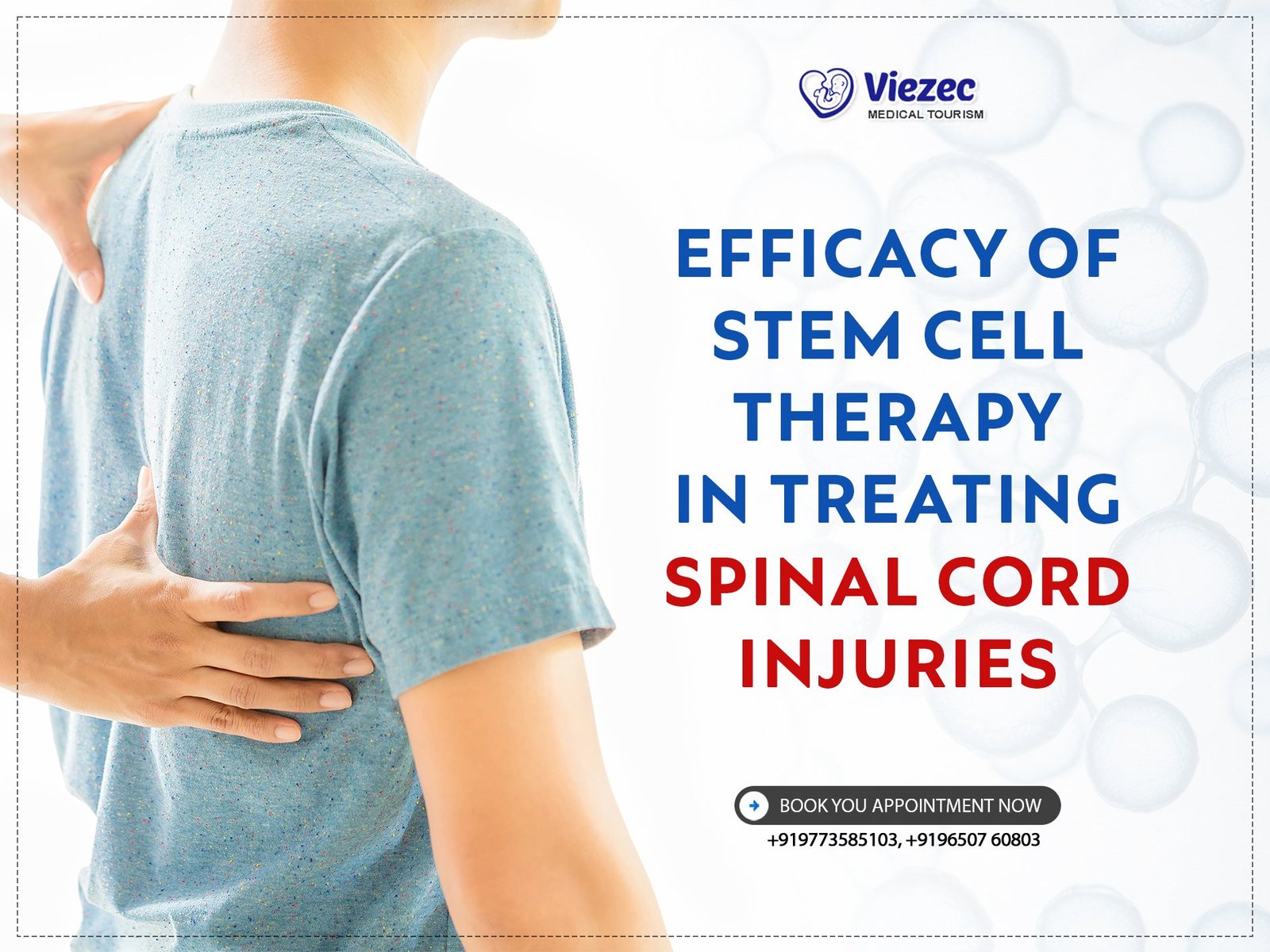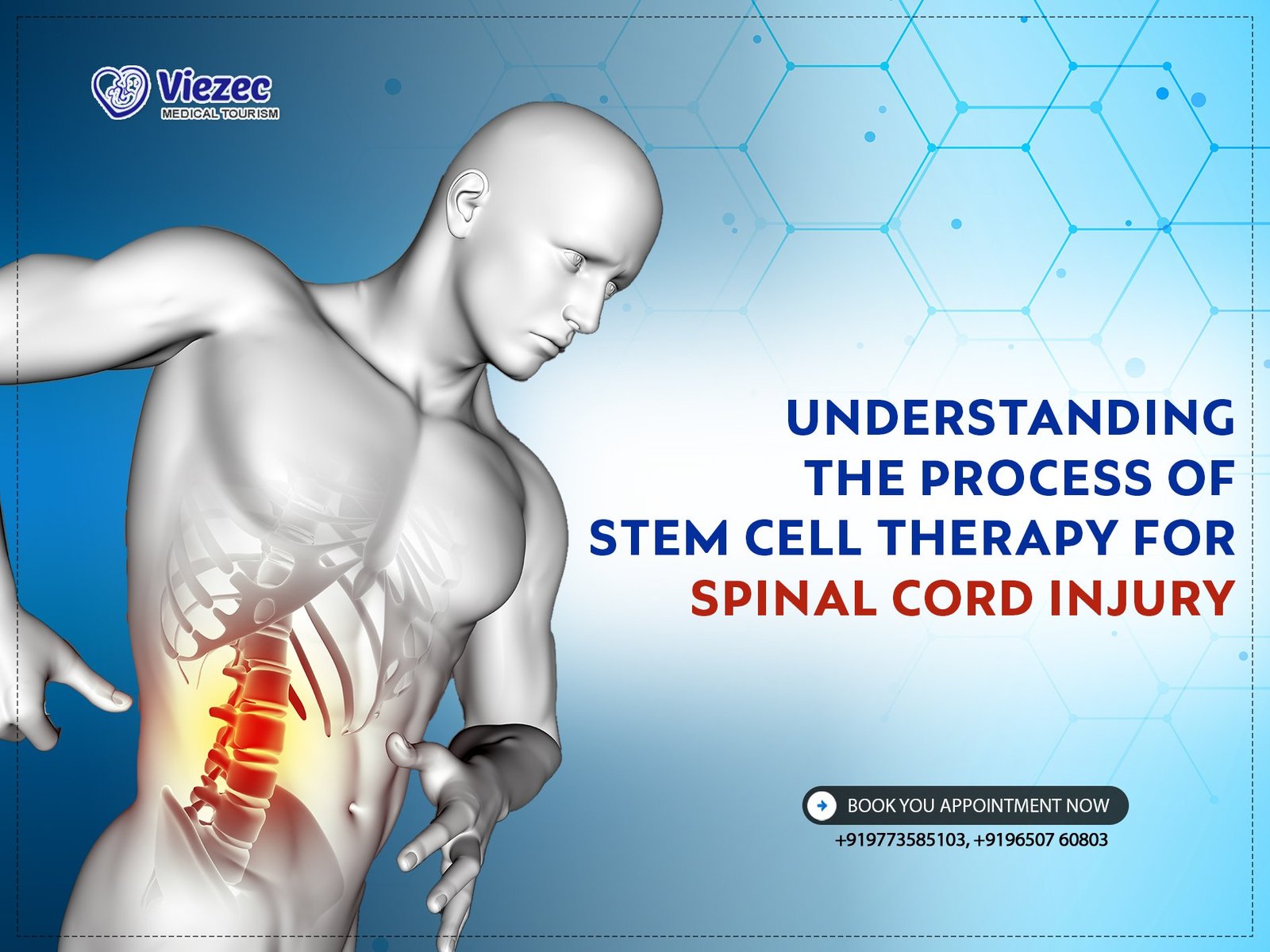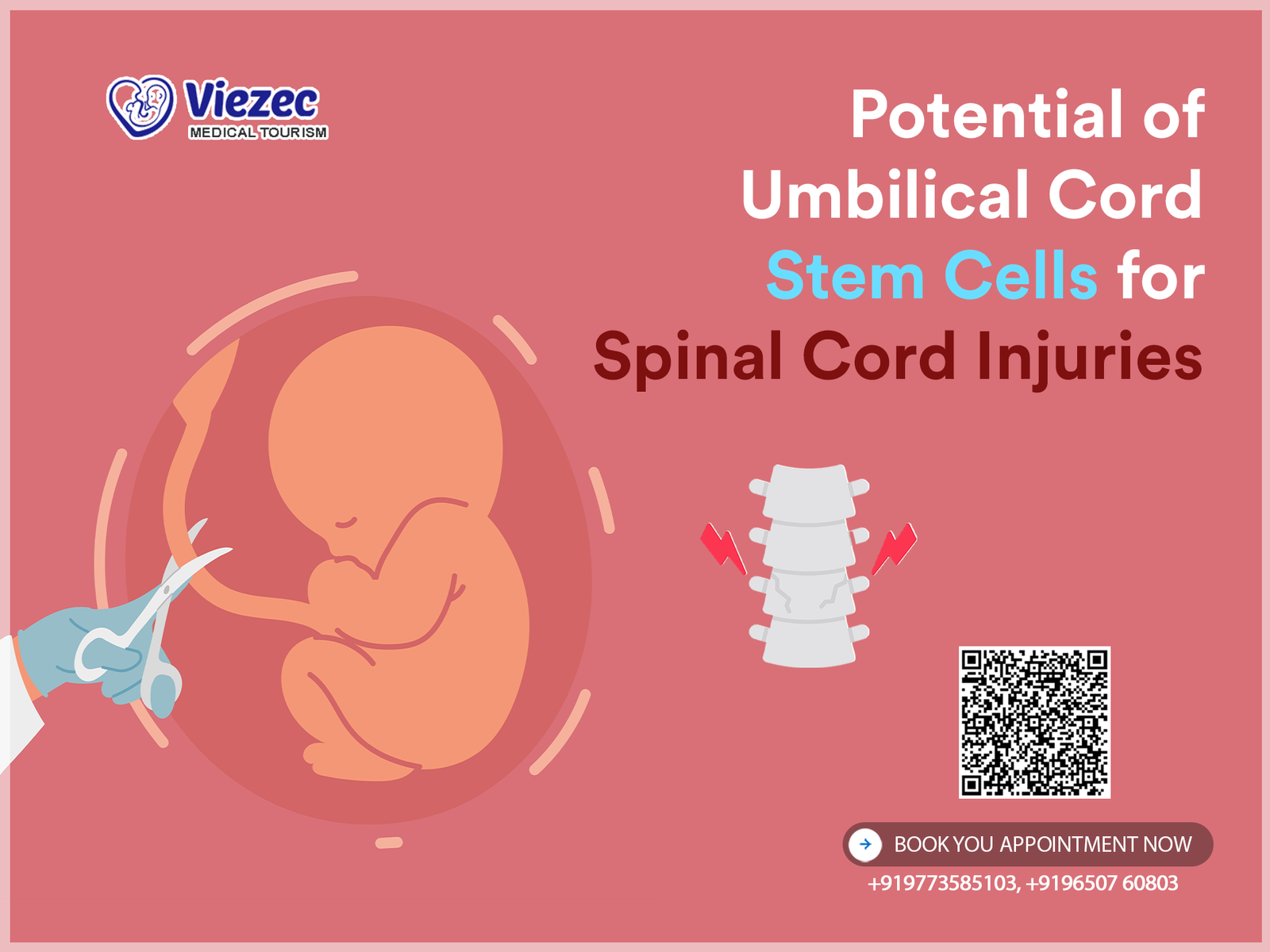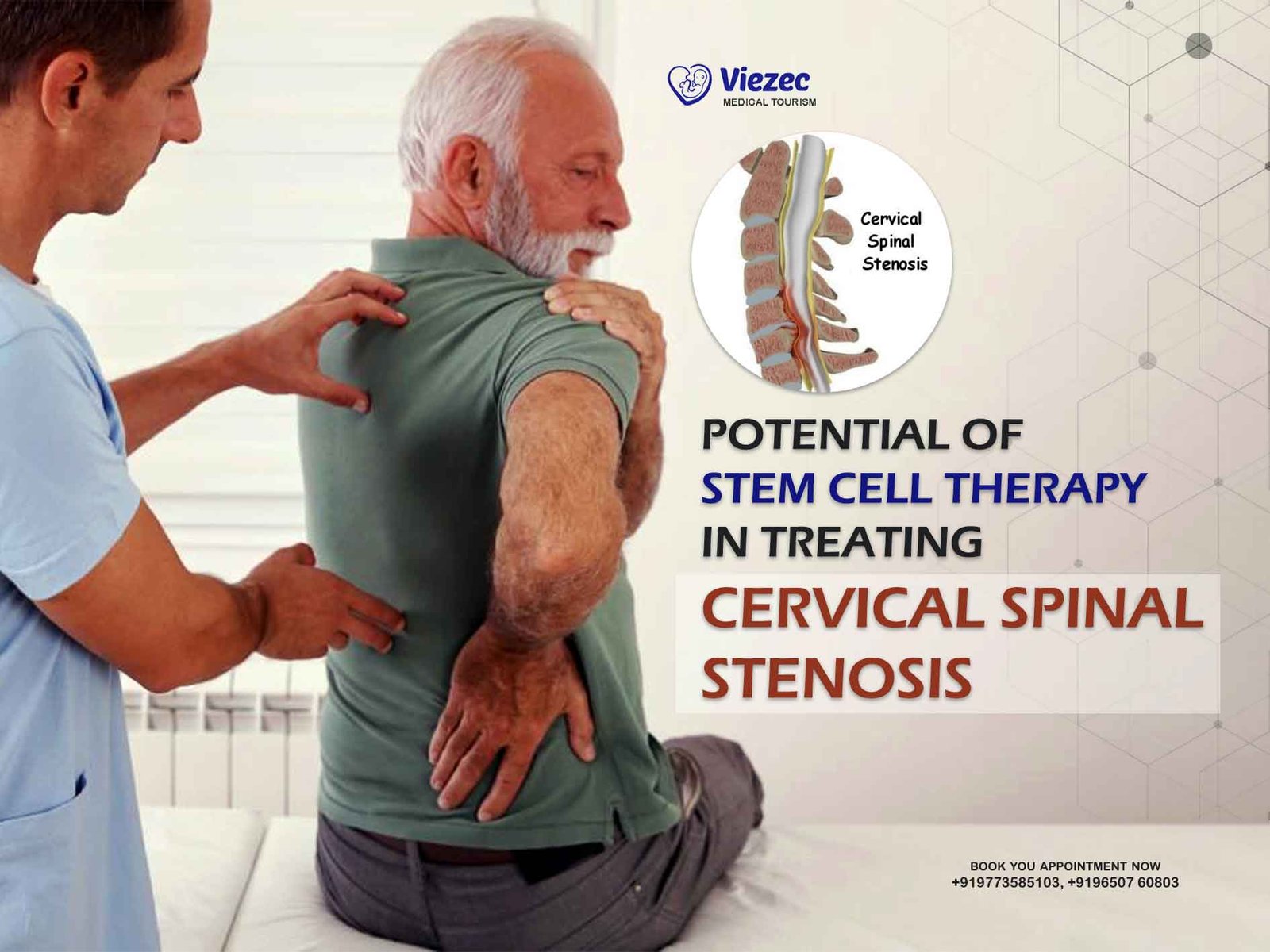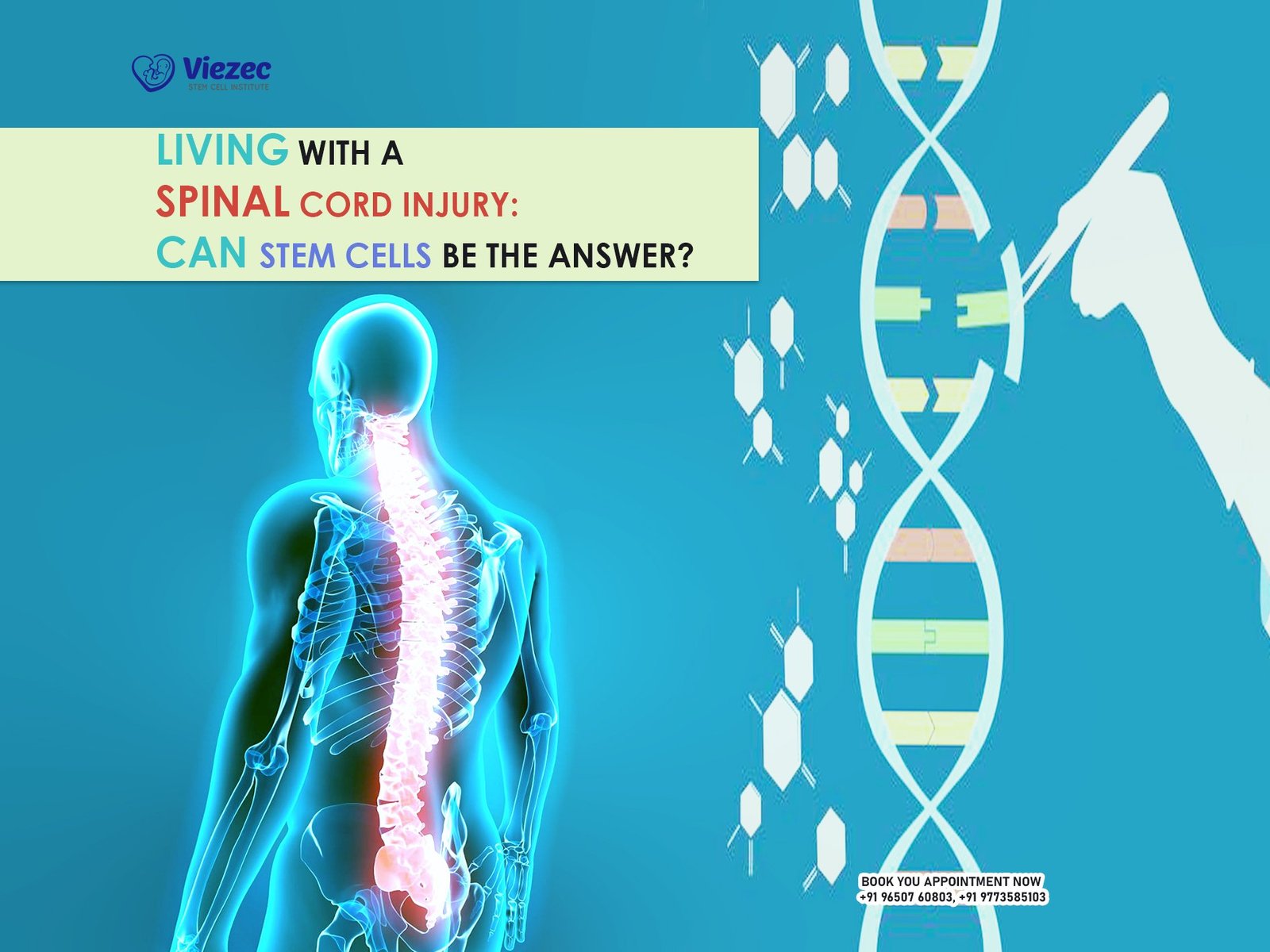Spinal cord injuries (SCIs) present a significant medical challenge, often resulting in permanent neurological deficits and a reduced quality of life. These injuries can arise from trauma, such as car accidents, falls, or sports injuries, and can lead to partial or complete loss of motor function and sensation below the site of injury. Traditional treatment options for SCIs focus primarily on stabilization, rehabilitation, and managing complications. However, these approaches do not address the underlying damage to the spinal cord tissue. In recent years, stem cell therapy has emerged as a promising avenue for potentially repairing spinal cord injuries and restoring function. This article explores the efficacy of stem cell therapy in treating SCIs, examining various types of stem cells, their mechanisms of action, clinical trials, and the future directions of this innovative treatment.
Overview of Spinal Cord Injuries
Spinal cord injuries are devastating events that disrupt the communication between the brain and the rest of the body. The severity of an SCI depends on the location and extent of the injury. Complete injuries result in total loss of motor and sensory function below the injury site, while incomplete injuries allow for some degree of retained function. Current treatments for SCIs focus on preventing further damage and maximizing residual function through rehabilitation and assistive technologies. Despite these efforts, the prognosis for individuals with SCIs remains poor, with limited options for reversing the damage. This has driven the search for new therapeutic approaches, including stem cell therapy, which aims to repair or replace damaged spinal cord tissue and promote functional recovery.
Current Treatment Options
Current treatment strategies for SCIs are largely supportive and palliative, aimed at minimizing secondary injury and improving quality of life. Immediate management typically involves immobilization and surgical intervention to stabilize the spine and decompress the spinal cord. Pharmacological treatments, such as high-dose steroids, may be administered to reduce inflammation and limit secondary damage. Long-term management focuses on physical therapy, occupational therapy, and the use of assistive devices to enhance mobility and independence. However, these treatments do not address the underlying damage to the spinal cord, highlighting the need for novel therapeutic approaches that can promote tissue repair and functional recovery.
Emerging Therapies: The Role of Stem Cells
Stem cell therapy represents a promising frontier in the treatment of spinal cord injuries. Stem cells have the unique ability to self-renew and differentiate into various cell types, making them potential candidates for regenerating damaged spinal cord tissue. Research has demonstrated that stem cells can promote neuroprotection, reduce inflammation, and enhance tissue repair. Various types of stem cells, including embryonic stem cells, adult stem cells, and induced pluripotent stem cells (iPSCs), are being investigated for their potential to treat SCIs. These cells can be transplanted into the injured spinal cord, where they may differentiate into neurons and glial cells, promote axonal growth, and improve functional outcomes.
Types of Stem Cells Used in Therapy
Embryonic Stem Cells
Embryonic stem cells (ESCs) are pluripotent cells derived from the inner cell mass of the blastocyst stage of an embryo. They have the ability to differentiate into any cell type in the body, making them a versatile option for regenerative medicine. ESCs can generate neurons, oligodendrocytes, and astrocytes, which are critical for spinal cord repair. However, the use of ESCs raises ethical concerns due to the destruction of embryos. Additionally, there are challenges related to immune rejection and the risk of tumorigenicity. Despite these issues, ESCs continue to be explored for their potential to regenerate damaged spinal cord tissue and improve functional recovery.
Adult Stem Cells
Adult stem cells, also known as somatic or tissue-specific stem cells, are found in various tissues throughout the body. These cells are multipotent, meaning they can differentiate into a limited number of cell types related to their tissue of origin. Sources of adult stem cells include bone marrow, adipose tissue, and neural tissue. Mesenchymal stem cells (MSCs) from bone marrow and adipose tissue have shown promise in preclinical studies for their ability to modulate the immune response, reduce inflammation, and promote tissue repair. Neural stem cells (NSCs) derived from the central nervous system have the potential to differentiate into neurons and glial cells, offering another avenue for spinal cord repair.
Induced Pluripotent Stem Cells (iPSCs)
Induced pluripotent stem cells (iPSCs) are generated by reprogramming adult somatic cells to a pluripotent state, similar to that of embryonic stem cells. This process involves the introduction of specific transcription factors that reset the cell’s developmental clock. iPSCs can differentiate into any cell type, offering a versatile and ethically acceptable source of pluripotent cells for regenerative medicine. They hold great promise for SCI treatment due to their potential to generate patient-specific cells, reducing the risk of immune rejection. However, challenges such as ensuring the safety and stability of iPSCs, as well as the risk of tumorigenicity, need to be addressed to fully harness their therapeutic potential.
Mechanisms of Stem Cell Action in Spinal Cord Injuries
Neuroprotection
Stem cell therapy can provide neuroprotection by modulating the inflammatory response and reducing secondary injury following an SCI. After an injury, the spinal cord undergoes a cascade of inflammatory events that can exacerbate tissue damage. Stem cells, particularly MSCs, have been shown to secrete anti-inflammatory cytokines and growth factors that can mitigate this inflammatory response. By reducing inflammation, stem cells can help preserve the remaining neural tissue and create a more favorable environment for regeneration. This neuroprotective effect is a critical aspect of stem cell therapy’s potential to improve outcomes in individuals with SCIs.
Regeneration
One of the most promising aspects of stem cell therapy is its potential to promote the regeneration of damaged spinal cord tissue. Stem cells can differentiate into neurons and glial cells, which are essential for repairing the injured spinal cord. Additionally, stem cells can secrete growth factors that stimulate axonal growth and guidance, promoting the formation of new neural connections. This regenerative capacity can help restore the structural integrity of the spinal cord and enhance functional recovery. Studies have shown that stem cell transplantation can lead to the formation of new neural circuits and the reestablishment of lost connections, offering hope for meaningful improvements in motor and sensory function.
Functional Recovery
The ultimate goal of stem cell therapy for SCIs is to achieve functional recovery, allowing individuals to regain lost motor and sensory functions. This involves not only the regeneration of neural tissue but also the integration of new neurons into existing neural circuits. Stem cells can enhance synaptic plasticity, promoting the formation of new synapses and the strengthening of existing ones. This synaptic integration is crucial for the restoration of motor and sensory functions. Preclinical studies and early-phase clinical trials have shown promising results, with some patients experiencing improvements in motor function, sensory perception, and overall quality of life following stem cell therapy.
Clinical Trials and Human Studies
Phase I Trials
Phase I clinical trials are the first step in evaluating the safety and feasibility of stem cell therapy for SCIs. These trials typically involve a small number of participants and focus on assessing the safety profile of the treatment, including potential adverse effects and immunogenicity. Preliminary efficacy data may also be collected to provide insights into the therapeutic potential of stem cell therapy. Early-phase trials have demonstrated that stem cell transplantation is generally safe and well-tolerated, with some participants showing signs of functional improvement. These findings have paved the way for further research and larger-scale clinical trials.
Phase II Trials
Phase II trials build on the findings of Phase I studies, involving a larger cohort of participants and employing more rigorous study designs to evaluate the efficacy and safety of stem cell therapy. These trials aim to determine the optimal dosage, delivery methods, and timing of stem cell transplantation. Outcome measures may include improvements in motor and sensory function, quality of life, and biomarkers of neural repair. Phase II trials provide valuable data on the therapeutic benefits of stem cell therapy and help refine treatment protocols for future studies. The positive results from these trials have fueled optimism about the potential of stem cells to treat SCIs.
Phase III Trials
Phase III trials are large-scale studies designed to confirm the efficacy and safety of stem cell therapy in a broader patient population. These trials involve multiple centers and include long-term follow-up to assess the durability of the treatment effects. Phase III trials aim to provide robust evidence that stem cell therapy can improve outcomes in individuals with SCIs, paving the way for regulatory approval and widespread clinical adoption. The success of Phase III trials would mark a significant milestone in the field of regenerative medicine and offer new hope for individuals living with spinal cord injuries.
Challenges and Limitations of Stem Cell Therapy
Immune Rejection
One of the primary challenges of stem cell therapy is the risk of immune rejection, where the recipient’s immune system attacks the transplanted cells. This can limit the effectiveness of the therapy and necessitate the use of immunosuppressive drugs, which carry their own risks and side effects. Strategies to mitigate immune rejection include the use of autologous stem cells, which are derived from the patient’s own body, and the development of personalized medicine approaches. Advances in gene editing and immune modulation may also help reduce the risk of rejection and improve the long-term success of stem cell therapy.
Tumorigenicity
Another significant concern with stem cell therapy is the risk of tumorigenicity, where transplanted cells may form tumors. This risk is particularly associated with pluripotent stem cells, such as ESCs and iPSCs, which have a high potential for uncontrolled growth. Rigorous screening and quality control measures are essential to minimize the risk of tumorigenicity. Researchers are exploring various strategies to ensure the safety of stem cell therapies, including the use of more differentiated cell types, genetic modifications to prevent uncontrolled growth, and careful monitoring of patients following transplantation.
Ethical and Regulatory Issues
The use of stem cells, particularly embryonic stem cells, raises ethical and regulatory issues that must be addressed. Ethical debates center around the destruction of embryos for the derivation of ESCs, while regulatory hurdles involve the approval and oversight of stem cell therapies. Ensuring the ethical sourcing and use of stem cells is critical for gaining public trust and regulatory approval. Regulatory agencies play a vital role in establishing guidelines and standards for the safe and effective use of stem cell therapies. Continued dialogue among scientists, ethicists, policymakers, and the public is necessary to navigate these complex issues and advance the field of regenerative medicine.
Future Directions and Innovations
Advances in Stem Cell Technology
Advances in stem cell technology are continually expanding the potential applications of stem cell therapy for SCIs. Gene editing techniques, such as CRISPR-Cas9, allow for precise modifications of stem cells, enhancing their therapeutic properties and reducing the risk of adverse effects. Biomaterial scaffolds are being developed to provide structural support and guidance for stem cell transplantation, improving cell survival and integration. These innovations hold great promise for enhancing the efficacy and safety of stem cell therapies, bringing us closer to realizing their full potential in treating spinal cord injuries.
Personalized Stem Cell Therapies
Personalized stem cell therapies, tailored to the specific needs of individual patients, represent a significant advancement in the field. Patient-specific iPSCs can be generated from the patient’s own cells, reducing the risk of immune rejection and enabling the development of customized treatment protocols. These personalized approaches can optimize the therapeutic potential of stem cells and improve outcomes for patients with SCIs. The integration of advanced imaging, biomarkers, and artificial intelligence can further refine personalized treatment strategies, ensuring that each patient receives the most effective and targeted therapy possible.
FAQs
1. What are spinal cord injuries (SCIs)?
Spinal cord injuries (SCIs) result from damage to the spinal cord, which can lead to loss of motor and sensory function below the injury site. They can be caused by trauma, such as accidents or falls, and can result in partial or complete paralysis.
2. How do stem cells help in treating SCIs?
Stem cells have the ability to differentiate into various cell types and promote tissue repair. In the context of SCIs, they can provide neuroprotection, reduce inflammation, promote regeneration of damaged tissue, and improve functional recovery.
3. What types of stem cells are used in SCI therapy?
The primary types of stem cells used in SCI therapy are embryonic stem cells (ESCs), adult stem cells (such as mesenchymal stem cells), and induced pluripotent stem cells (iPSCs). Each type has its own advantages and challenges in terms of therapeutic potential and safety.
4. What are the main challenges of stem cell therapy for SCIs?
The main challenges include immune rejection, tumorigenicity, ethical concerns, and regulatory hurdles. Addressing these challenges is essential to ensure the safety and efficacy of stem cell therapies for spinal cord injuries.

